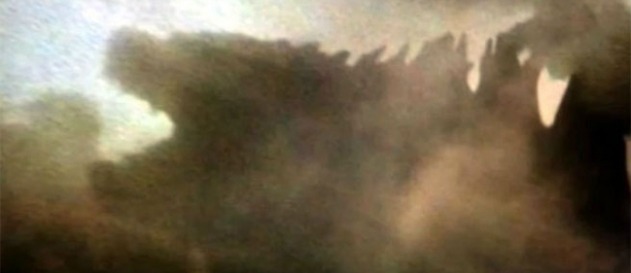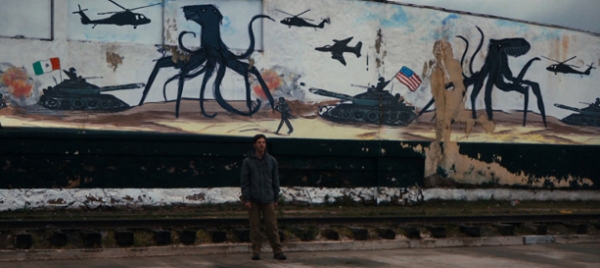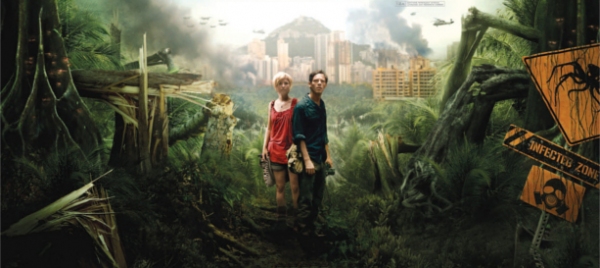
I’m looking forward to the new Godzilla reboot, but for reasons that have nothing at all to do with any unexpurgated childhood ardor I might still harbor for the Toho behemoth or that entire aged genre of deplorable Japanese pulp. (I have none.) Nor does my excitement involve any hope or love for monster movie remakes in general. This cultural paradigm we’re trapped in, where the majority of Hollywood money is spent on remakes and superheroes and CGI “action” monstrosities, caters first and foremost to the fourteen-year-olds among us, and secondly to those of various older cohorts who deign to be, or naturally see themselves, as demanding and sophisticated as a fourteen-year-old. Those of us with tax bills and interpersonal experience and a yen for emotional intercourse that shades a little more complex than early-teen wish fulfillment are not even on the radar anymore. God forbid money should be budgeted on movies made for people whose frontal cortexes have actually finished developing. Godzilla, in any version (say, the last deplorable American redo, from 1998, or the seven or so remakes and sequels ground out in Japan in the interim), has never been on my to-do list.
The reason I’m game this go-around is because I’m an auteurist, and I have faith in young director Gareth Edwards thanks to his first film, Monsters (2010), which is a fascinating, ingeniously self-reflexive sci-fi micro-indie that resonates with thematic protein and textual heat the more I ponder it. And I do ponder it still, idly wishing that Edwards’s example, in concept and method, had left its bootprint on every young American filmmakers’ brain going forward, instead of being more or less shunted aside by movie-culture forces wielding far more publicity cash. It’s such an original freakazoid construction that you can’t talk about the film at all without talking about how Edwards made it—the two realities are inextricably reflective, and complementary. And the damn thing means stuff—like all good science fiction, it flirts with the razor’s edge of satire, creates metaphors that live in four dimensions, and provides a speculative window through which we can see the present moment, however otherwise obscured by distraction, convenience, perversity and greed.

Simply, Monsters is a ten-minutes-into-the-future tale that acts like a reconnaissance mission exploring the frontier of our own privileges and presumptions. There is no villain. An opening card informs us that, thanks to the landing of a corrupted space probe, half of Mexico has now been infested with giant aliens (they look like silo-sized octopuses walking on their tentacles) and is therefore officially quarantined. We enter south of the forbidden zone, where a photojournalist (the remarkably watchable Scoot McNairy) is sent by his magazine to escort the publishing magnate’s daughter (Whitney Able) safely north through the Gulf, past The Wall that now separates Mexico from the U.S. Of course, mishaps and corruption pile up, and the mismatched couple are forced to buy their passage upriver through the quarantined region itself.
But wait: look at how the filmmaker managed to muster this universe with little more than what he could pack into his boxers. A digital-effects pro, Edwards had an ingenious plan: take his two actors into Mexico and Central America with just one other crew-member/cameraman, shoot impromptu with “off the shelf” HD video, and incorporate the real terrain and locals, most of whom thought they were being included in a documentary. (Werner Herzog, with only one science fiction meta-film—2005′s The Wild Blue Yonder—under his belt, would surely approve.) Afterwards, Edwards seamlessly added wrecked planes and bombed buildings to the landscape; we cannot tell exactly how much of what we see in the film represent “found” leftovers of war and neglect, but it would seem as though passages shot in Guatemala, Belize and Mexico took advantage of detritus from the Guatemalan Civil War of the ’80s and ’90s, of the standing military presence on the disputed border between Guatemala and Belize, and of the rampant strife and police action in Mexico. Into the mix was also added, with seamless craft, a novel’s worth of infrastructural ephemera—signs, hazmat logos, TV news reports, video games, etc. When the small crew found real traffic, accidents, ruins or helicopters in the jungle, they used them. At one point, an interviewed bystander tells of his family’s encounter with Bigfoot, and Edwards cuts it into his alien-invasion context without a visible stitch.
Envisioning these overgrown wastes—a mere taste of what U.S.-abetted action in the subcontinent had to offer in the last three decades—as an inexplicable alien corruption at which we can only stare gape-mouthed, is a bitter political-satiric flourish worthy of Franz Kafka, J.G. Ballard, John Brunner or José Saramago. The matters of immigration and post-imperialism are evoked in tangible form (the looming wall separating Mexico and the U.S. may be Edwards’s most haunting visual), but not didactically. The alien creatures, which are revealed to be as capable of homicidal mayhem and tenderness as any wild animal, aren’t avatars of Mexican immigrants per se, Wall or no Wall, but something more philosophical: an organic circumstance of Otherness, a shadow version of the Third World biosphere repeatedly crushed by American influence and capitalism. It’s a world mostly forgotten by self-interested young white Americans just like McNairy and Able, who “awaken” as so many sheltered American kids have to the plight of those below the border.

Still, Edwards’s methodology never leaves our sight—we’re constantly confronted with the bizarre anomaly of the film being “found” somehow, on the fly, with all of the authenticity that implies, and therefore with the sense of the utterly absorbing fiction becoming silhouetted against the light of reality and Edwards’s de facto editorial position, which is, in effect: “You can see with your own eyes that what’s left in the wake of imperial oppression and war is already science fiction, that our world is already the deranged shambles we foresaw for the future.” The upshot is hypnotically convincing, a new kind of unnerving neo-realism, where anything at all can be made to appear dead-real and where the future looks and feels like yesterday’s handheld on-location two-hander.
It’s not the kind of genre indie that crops up everyday, and it offers hope against hope that a new Godzilla might, just maybe, be invested with a measure of visual smarts, visceral texture and thematic originality. If not, as well might be the case with a movie with a nine-figure budget, we can always return to the 1954 original Gojira—which offers at least a chilling blast of analogue apocalypse. Or, even better, we can revisit Monsters, which I group in my head with several art films, including Abbas Kiarostami’s The Wind Will Carry Us (1999), as a movie whose undictated environment and fauna I have yet to fully exhaust. In these two films, which are actually two versions of the same story, and were produced with similar strategies, the unpredictable incompleteness of experience is the aesthetic and political point. Try as we might, we’ll never duplicate on a hard drive the mysteries of a day in human company.
TOPICS